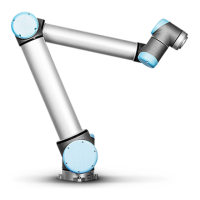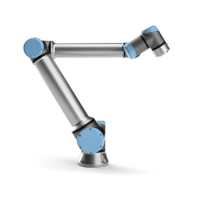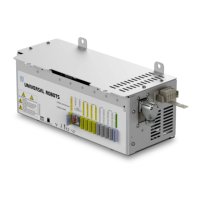• Use outside of stated specifications
• Use as a climbing aid
• Operation outside the permissible operating parameters
1.5.7. Risk Assessment
One of the most important things that an integrator needs to do is to perform a risk assessment.
In many countries this is required by law. The robot itself is partly completed machinery, as the
safety of the robot installation depends on how the robot is integrated (E.g. tool/end effector,
obstacles and other machines).
It is recommended that the integrator uses ISO 12100 and ISO 10218-2 to conduct the risk
assessment. Additionally the integrator can choose to use the Technical Specification ISO/TS
15066 as additional guidance.
The risk assessment that the integrator conducts shall consider all work tasks throughout the
lifetime of the robot application, including but not limited to:
• Teaching the robot during set-up and development of the robot installation
• Troubleshooting and maintenance
• Normal operation of the robot installation
A risk assessment must be conducted before the robot arm is powered on for the first time. A
part of the risk assessment conducted by the integrator is to identify the proper safety
configuration settings, as well as the need for additional emergency stop buttons and/or other
protective measures required for the specific robot application.
Identifying the correct safety configuration settings is a particularly important part of developing
collaborative robot applications. See chapter1.6. Safety-related Functions and Interfaces on
page13 and partPart II PolyScope Manualon page85 for detailed information.
Some safety-related features are purposely designed for collaborative robot applications. These
features are configurable through the safety configuration settings and are particularly relevant
when addressing specific risks in the risk assessment conducted by the integrator:
• Force and power limiting: Used to reduce clamping forces and pressures exerted by the
robot in the direction of movement in case of collisions between the robot and the
operator.
• Momentum limiting: Used to reduce high transient energy and impact forces in case of
collisions between robot and operator by reducing the speed of the robot.
• TCP and tool/end effector position limiting: Particularly used to reduce risks associated
with certain body parts. E.g. to avoid movement towards head and neck.
• TCP and tool/end effector orientation limiting: Particularly used to reduce risks associated
with certain areas and features of the tool/end effector and work-piece. E.g. to avoid sharp
edges to be pointed towards the operator.
• Speed limitation: Particularly used to ensure a low speed of the robot arm.
UR10 10 User Manual
Copyright © 2009–2020 by UniversalRobotsA/S. All rights reserved.

